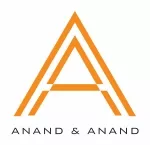The experience of applying Alternate Dispute Resolution (ADR) to intellectual property matters in India can be examined over three phases, namely :
- Prior to July 2002;
- From July 2002 to 2006;
- Post-2006
In the first phase, i.e. prior to July 2002, there was hardly any experience of using ADR as a tool to settle intellectual property disputes. In this phase, a large percentage of IP law suits filed in India would get settled after the initial stage of a lawsuit relating to the grant or denial of an interim injunction. Whichever way the injunction was decided would invariably determine the final outcome.
Some would venture to say that 90% of the cases settled this way with very few cases moving towards trial and of the remaining cases, a good number would fizzle out before the trial. This resulted in judges, lawyers, litigants and academics treating intellectual property disputes as essentially interim injunction matters.
There were two trends which changed this. First and foremost was the substantive changes made to the intellectual property laws on account of TRIPS. Thereafter procedural laws also underwent a root and branch revision in July 2002 as the Code of Civil Procedure ("CPC") was dramatically amended.
The second trend was the emergence in July 2005 of the damages culture.
The former event introduced a new provision under Section 89 of the CPC which provides that if a court sees elements of a settlement, mediation, conciliation etc. then the court can, of its own motion, refer the dispute for mediation, conciliation etc. as per the procedure laid down in Section 89.
Up to this stage, mediation had not been attempted in intellectual property matters although there was vast experience of settlement which was essentially arrived at by mutual consent between the litigants with or without the assistance of their lawyers.
During the phase 2002-2006, there were a few intellectual property cases where mediation was attempted but there was very little experience or faith in the likely success of the process. As a result, the mediation process almost entirely failed.
In 2006, there was a burst of training of judges in Delhi and Bangalore which exposed the judges to advanced models of mediation, early neutral evaluation, (ENE) plea-bargaining, etc.
By this time, the Delhi High Court had started to grant damages in a large number of intellectual property matters and some courts had taken the view that it was high time that damages, not only compensatory but punitive and exemplary, were granted in order to reduce the pressure on the criminal justice system and to make the civil remedy more attractive. As a result of this, the plaintiffs began asking for not just an injunction but something substantially more and cases would not settle with the same ease as earlier.
The defendants were fighting back, unwilling to pay damages, and mediation came along as a useful tool in resolving some of these contested cases.
In the beginning, one or the other of the parties would be reluctant to agree to mediation for fear that the failure to esolve issues before the Mediator would somehow be reported to the court as being attributable to their conduct but later, as the number of experienced Mediators increased, everyone realized that the success of the process lay in its confidentiality.
The situation today is that not only are litigants happy to attempt mediation but the Delhi High Court Mediation Center has seen a very high success rate of around 70%. The Delhi High Court has introduced a form to be filled up with every law suit at the stage of institution whereby a Plaintiff must to indicate whether it desires to settle the matter through mediation, conciliation, etc. In Bawa Masala Co. vs Baba Masala Co. Pvt. Ltd. Hon'ble Mr. Justice Sanjay Kishan Kaul of the High Court granted an ENE order and two neutrals gave their report following which a number of disputes between the parties got resolved as a result of mediation.
Apart from New Delhi, the experience of mediation in Bangalore has been a remarkably good one due to the efforts made by Hon'ble Mr. Justice Cyriac Joseph, former Chief Justice of the Karnataka High Court and presently a Judge of the Supreme Court.
The experience at the end of the day is still a mixed one and there is a great desire of parties to seek out experienced Mediators whose personalities to a great extent determine whether the case will settle. For this reason, the training of Mediators has been stepped up considerably.
The content of this article is intended to provide a general guide to the subject matter. Specialist advice should be sought about your specific circumstances.
We operate a free-to-view policy, asking only that you register in order to read all of our content. Please login or register to view the rest of this article.


